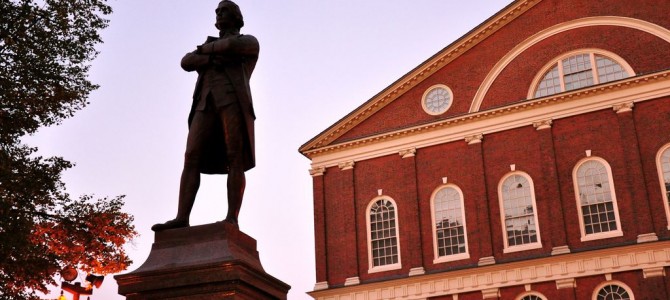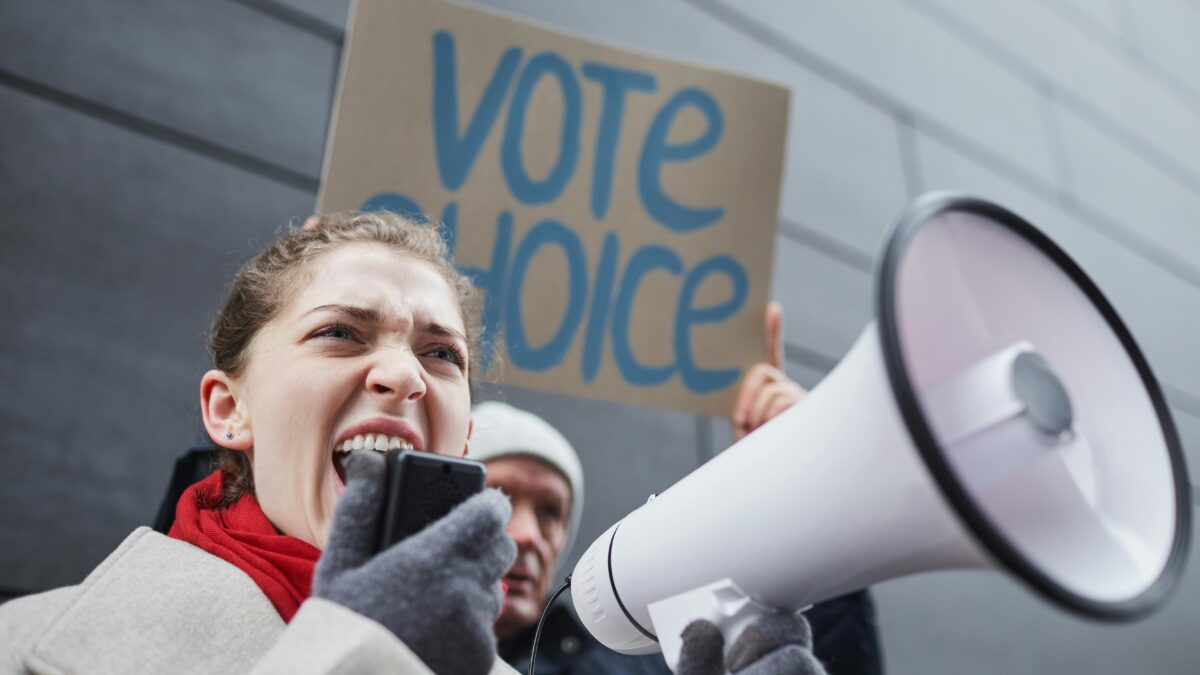
A brief history of the Electoral College shows how far the process of selecting the president of the United States has changed from the vision of the Framers of the U.S. Constitution and the practices of the early years of the republic. It would also help us better appreciate its purpose.
The Electoral College was inspired by the College of Cardinals, which elects the Catholic pope. Charles Carroll of Carrollton, the only Catholic signer of the Declaration of Independence, is credited with its creation. He had authored a distinctive provision in Maryland’s first constitution in 1776 that established a body of popularly elected electors who selected the state’s senators.
In 1787, the Constitutional Convention adapted a provision based on Maryland’s as the basis of the constitutional method for selecting the president. A key difference between the two under the constitutional principle of federalism is that the electors do not meet as a whole body, but separately in each state and the District of Columbia, out of respect for state sovereignty. The words “Electoral College” do not appear in the Constitution as a name for this institution, as the presidential elections are the collective work of 51 individual bodies.
Because of current practices for selecting the president, those who recognize that electoral votes are more than a kind of point-scoring system that evens out the weight of the states often think that the presidential and vice presidential electors (the members of what popularly became known as the Electoral College) check the people, which, in practice, has become true. However, the history of their office reveals the electors were intended more as representative of the people and the states.
It’s All About Representing the People and States
In creating electors as the method of selecting the president, the Framers chose neither direct popular election nor election by the Congress, as some of them had favored, but instead established a method that was representative of the people and the states. Except for the later provision of electors for the District of Columbia, the allocation of these electors matches that of the combined number of members of both chambers of Congress.
The number of representatives in the House is based upon population, because they are elected to represent the people, while an equal number of senators represents each state in the Senate. Therefore, the size of the Electoral College is the result of a compromise that, like the Congress, balances population with state equality, in keeping with federalism.
Similarly, the composition of the Electoral College helps prevent the larger states from dominating the smaller ones. Beyond the composition of the Electoral College, the role of the states in choosing the president, who presides over the union of the states, is preserved through the power of state legislatures to choose the electors by whatever means they decide, even if they chose to make the office of elector elective.
The Framers opposed democracy (direct rule of the people), preferring representative republican government. Membership in the House of Representatives was the only constitutional office the Framers established that was elected popularly, as the president, vice president, and senators were not directly elected under the original terms of the Constitution. Even the office of presidential and vice presidential electors was not necessarily elective, but could be appointive.
Therefore, the only two federal offices the Framers established that could be elective were both representative in nature. Like senators, state legislatures appointed electors to primarily represent the states, while elective electors are more representative of the people. Nevertheless, in both cases, the electors, like Congress as a whole, represent both the people and the states.
We Don’t Want a Democracy, Thanks
Like any representatives, presidential and vice presidential electors are supposed to exercise their judgment, in good conscience, about what is in the best interests not only of the union but of the states and people. Since the method of selecting a president is not based primarily on the will of the people, an elector who carries out this duty as a representative is thus not a “faithless” elector, but a faithful one.
We can also observe this representative role of the presidential and vice presidential electors in the state laws of the early period of the republic about selecting these electors. Some state legislatures opted at first to appoint their presidential and vice presidential electors, others to allow them to be popularly elected. A few even alternated between presidential elections from elections to appointments. Gradually, all of the states adopted popular elections, but with South Carolina as the last holdout, the first presidential election in which all of the electors were popularly elected was not until 1868.
For extraordinary reasons, electors have been appointed on subsequent occasions. States retain the power to set aside electors’ elections, even after they have been elected, and appoint them instead. Even though the states exercise their discretion to allow the people to elect the electors to represent them, it is important to remember that this representation occurs only through the power of the states.
In the federal period, the people directly elected the electors who were not appointed, unlike the current practice, in which voters elect them indirectly by casting ballots for presidential and vice presidential candidates that count for an unnamed slate of electors the presidential candidates have nominated. In some states currently, the ballot does not even mention that the election is only for the electors these candidates have nominated, which misleads people even more to believe they are voting directly for president and vice president.
The representative role of the Electoral College was thus clearer in this original method of direct election than today’s method, in which it is popularly believed that the presidential election is essentially a democratic exercise, and that the purpose of the electors is mainly to even out the strength of the states.
Nobody Campaigned for President Then, Either
Not only did these early methods of selecting presidential and vice presidential electors emphasize their representative role, but common practices at the time did, as well. It is critical to understand that in the first several decades of the American republic, no one personally campaigned for president, vice president, or any other political office, including even presidential and vice presidential electors. The popular belief at the time was that seeking office would be arrogant, as “the office seeks the man, not the man the office.”
The similarity between the Electoral College and the College of Cardinals was more noticeable then, as no one publicly campaigns to be elected pope and the selection sometimes surprises the public whenever a less relatively known person is selected. There were no political campaigns in the early republic in the more modern sense, but informal public debate through conversations among the people and exercising the freedom of the printing press. It was not until 1840 that anyone personally campaigned for president or vice president of the United States.
Before the rise of political parties, there were originally no names on ballots for offices. There were only write-in votes. Later, parties united behind candidates whose names were placed onto election ballots, through changes to election laws. Similarly, at the Electoral College, there were only write-in votes for president and vice president.
How Everything Changed
A reaction against the representative role of the Electoral College contributed to the foundation of the Democratic Party. In 1824, the elective presidential and vice presidential electors for Andrew Jackson and his running mate won the most popular votes among the four main candidates. None of the presidential candidates won a majority in the Electoral College, although Jackson earned a plurality. The House of Representatives elected John Quincy Adams, whose electors had earned the second most popular votes and the second most votes in the Electoral College.
Jackson and his supporters believed this deprived their candidate of the office he had rightfully earned, and formed the Democratic Party. As their party’s name implies, Democrats believed in making elections more democratic in various ways, including eliminating or at least reducing the role of the Electoral College.
Although the Democrats did not eliminate the Electoral College altogether, after winning the 1828 elections they democratized elections in other ways, and advanced the trend away from the Framers’ original vision for presidential and vice presidential electors, especially by increasingly blurring the distinction between electing electors and electing the president and vice president. The trends, which have weakened the Electoral College’s representative role, were maintained when states made the office of elector elective and bound electors nominated by the presidential and vice presidential candidates to vote for those candidates, instead of allowing the electors to be free to exercise their judgment.
This democratization helped to mislead the people into believing that presidential elections were primarily supposed to reflect their will because many people perceived they were voting directly for the candidates for president and vice president whose names appeared on the ballots, instead of only casting ballots for electors. Others who had at least some awareness of the Electoral College believed they were indirectly electing the president and vice president by voting for the presidential and vice presidential candidates, who would then necessarily win the votes of the electors from their states, since the electors were nominated by the presidential candidates and were often bound to vote for them by state law.
However, contrary to common parlance and belief, unless one is an elector or U.S. representative, no one votes for president and vice president. No presidential ticket receives any “popular votes.” As envisioned by the Framers, a person need not personally campaign, be named on any ballot, and receive any “popular votes” for members of the Electoral College to elect him or her president of the United States. These Electoral College members themselves are not necessarily elected or, even if they were, need not to have personally campaigned for office, and need not to have appeared on any ballot.
Although the Electoral College is at least recognized nowadays as a check on the popular will, the origin and early history of this institution suggests the presidential election was never intended to be primarily a democratic exercise, but an exercise in representative republican government. Restoring the role of the electors as representatives of the states and the people would not usurp the will of the people, but return us to the vision of the Framers of the Constitution.







